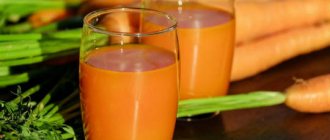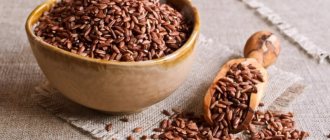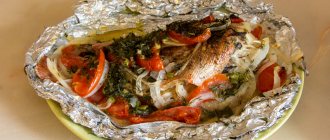Brynza is a pickled cheese made from a mixture of cow and sheep milk (less commonly goat milk) [1]. Despite the fact that progress has also affected cheese production, the production of feta cheese is approached especially carefully and traditionally. The cheese is soaked, given a special shape, and spices are carefully introduced (if necessary). Real cheese is white, barely crumbly, but not dense, easy to cut and has a salty taste of fermented milk products.
Brynza, made exclusively from sheep's milk, is the main cheese component of the Romanian, Moldavian, Macedonian and Bulgarian culinary traditions. The product is added everywhere: to salads, pies, snacks, first and second courses. The cheese is fried, marinated, baked and even boiled. Why is feta cheese so good and how to properly introduce a new product into our diet?
general characteristics
Brynza is a soft cheese of a standard white shade. Its taste and smell are fermented milk, medium salinity. The consistency of the product is dense, often hard. The cheese breaks easily, but does not crumble. The shade of cheese is uniform and can vary from milky white to pale yellow. There is no pattern, a minimum number of irregularly shaped voids is acceptable. The surface is smooth, clean, and does not form a crust. The surface structure can push away traces of serpyanka (a special mesh in which cheese is soaked). Slight deformation and minor cracks on the bars are allowed.
Content:
- general characteristics
- Brief historical background
- Useful properties of the product
- Chemical composition
- Use of the product in cooking
- Features of local production and consumption of cheese
- Possible consequences and contraindications
- How to select and store cheese
Bryndza can be easily made at home. Prepare the necessary equipment, ingredients and create your own cheese with a unique flavor palette. Homemade cheese is significantly different from store-bought cheese and saves the family budget.
Cheese cheese - benefits, calorie content and harm
Cheese cheese is one of the products made from milk. Usually white in color, similar in appearance to cheese, it has a fermented milk taste and smell. It has been consumed by humans since ancient times, and the benefits of feta cheese for almost any age have been known for a long time. Medical treatises describe that it has a beneficial effect on digestion, strengthens bones and teeth, and prevents hair loss.
According to legend, feta cheese was first accidentally discovered by the Arabian merchant Kanan three millennia BC. Its preparation is described by Homer in the Odyssey. Thanks to cultural exchange, feta cheese entered Europe. In Kievan Rus it was for a long time the only known cheese and a popular product; The chronicle mentions that tribute from the Russians was sometimes taken in cheese. The now famous name for cheese was given by the Getae, who lived between the Danube and the Balkans. Today, feta cheese is one of the main products in a number of national cuisines of Eastern Europe.
Composition and calorie content of cheese
Compared to other hard cheeses, the composition of feta cheese is much better balanced for the benefit of the human body: it contains less fat and more protein. The healing properties of feta cheese are largely associated with the easily digestible calcium it contains: the body’s daily need for it is provided by just 100 grams of the product. Another nuance that makes feta cheese so useful: its preparation does not require heat treatment, and therefore all vitamins (C, E, A, B1, B2) and minerals (calcium, potassium, fluorine salts) are preserved.
The average calorie content of feta cheese is only 260 kcal , which allows it to be classified as a dietary product. There are varieties of cheese with a calorie content of less than 160 kcal.
Useful properties of cheese
In order for feta cheese to truly become a product that improves health, and not vice versa, first of all, you need to pay attention to the quality of the purchased feta cheese:
- It should have an elastic shape. If the cheese slowly spreads or crumbles, the production technology is broken. The dry edge of the cheese is evidence of its long-term storage before sale, which means that some of its healing properties have already been lost.
- Its color should be white or light yellow. If the cheese has bright yellow dry specks, the product is stale.
- The structure of cut cheese is slightly porous, with a small number of irregularly shaped voids.
- Attention! Preservatives are often added to cheese sold through retail chains to increase shelf life.
It is necessary to store cheese only in the refrigerator, tightly wrapped in cling film or foil, and remove it from there for a short time. The average period of its proper storage is 5-7 days. (The ideal option is when the feta cheese is stored in its own brine: 2-3 weeks.) After its expiration, the feta cheese loses its taste and, most importantly, beneficial properties.
The benefits of feta cheese are determined primarily by the increased content of calcium and phosphorus in it, so it is recommended for diseases and injuries of the skeletal system (osteoporosis, rickets, fractures), as well as for pregnant women. The therapeutic complex of cheese made from lactic acid bacteria, amino acids and B vitamins is indicated for diseases of the liver and nervous system, and in old age. A positive effect on the condition of the skin was noted when consuming feta cheese. The low-calorie product, which at the same time contains animal protein, is an excellent recommendation for everyone who has given up meat products.
It should be noted, however, that the widespread opinion about the normalization of intestinal microflora by consuming feta cheese is incorrect, since it does not contain live bacteria. This is determined by soaking it in salt water when cooking to stop any bacteria from growing.
Harm of feta cheese
The existing contraindications of feta cheese are associated precisely with the increased salt content in it. It is undesirable to use it for chronically suffering from diseases of the cardiovascular and urinary systems, as well as for those with impaired stomach acidity. The salinity of the cheese can be reduced by scalding it with boiling water or keeping it in cold water before eating.
Brynza, like other cheese, is incompatible with meat, fish, poultry, legumes, vegetable oil, sugar, confectionery, and sweet fruits.
Brief historical background
The Arab East is considered the birthplace of cheese. Seven thousand years ago, thanks to the eastern merchant Kanan, the world received a special soft cheese with specific taste qualities and an aroma unlike anything else. Kanan, setting off on his next trade route, poured sheep's milk into a wineskin, covered it with a lid and several layers of cloth so that the milk would not spoil from the heat. After ten kilometers, Kanan decided to take a break and empty the bowl of milk. As soon as the traveler opened the vessel, white liquid poured out of it and a dense milk block fell out. Kanan, without realizing it, got hold of a method for making cheese. The traveler liked the taste and aroma of the dairy product, and he decided to repeat and improve this culinary innovation. This is how the world became acquainted with feta cheese.
Useful properties of the product
Natural cheese is an absolute record holder for calcium (Ca) and phosphorus (P) content. Consider the amount of fat in its composition and correctly distribute the product in your daily diet. It is recommended to consume cheese before 16:00 with a large amount of fiber for complete and rapid absorption.
High-quality cheese is aged for at least 30 days. It is this product that can benefit the body and have a beneficial effect on your appearance. Fats are the key to good health and good appearance. The regular presence of cheese in the diet will improve the condition of the skin, moisturize, nourish it with useful substances, and stop aging.
The calcium contained in feta cheese is more easily absorbed by the human body than the same nutrient in greens and berries. The substance will strengthen the skeletal system and improve the condition of the teeth.
Cheese cheese improves digestive function, accelerates metabolism and does not create additional stress on the abdominal organs. The product acts as a kind of disinfectant: it creates a special barrier for bacteria and suppresses the development of putrefactive microorganisms in the gastrointestinal tract [2].
Brynza cheese: composition
The product is prepared using special technology. Rennet is introduced into pasteurized milk, after which the mass is placed on a pressed table, and then ripened in brine for three to four days.
The finished product is pure white or slightly beige. As a valuable source of animal protein, white cheese improves digestive processes and promotes the natural process of weight loss.
Bryndza is endowed with a rich composition of microelements and beneficial bacteria:
- vitamins A, B, C, D;
- minerals: calcium, iron, phosphorus, magnesium;
- organic acids;
- cholesterol.
Supermarkets offer a large selection of different types of cheese to suit every taste, both from local farmers and foreign producers, differing in composition and saltiness.
Lovers of natural nutrition can prepare milk cheese at home. The brine product is consumed raw, retaining all the beneficial substances for the body.
Chemical composition
Nutritional value (per 100 grams of finished product)
| Characteristic | Brynza with cow's milk | Brynza with sheep's milk |
| Calories | 262 kcal [3] | 260 kcal [4] |
| Squirrels | 17.9 g | 21.1 g |
| Fats | 19.2 g | 18.8 g |
| Carbohydrates | 0.4 g | 0.3 g |
| Alimentary fiber | 0 g | |
| Water | 52 g | 53 g |
Vitamin composition (in milligrams per 100 grams of finished product)
| Vitamin | Brynza with cow's milk | Brynza with sheep's milk |
| Retinol (A) | 0,18 | 0,192 |
| Beta-carotene (A) | 0,006 | 0,007 |
| Thiamine (B1) | 0,04 | 0,05 |
| Riboflavin (B2) | 0,12 | 0,15 |
| Ascorbic acid (C) | 1 | 1 |
| Calciferol (D) | 0,00062 | 0,00061 |
| Tocopherol (E) | 0,3 | 0,4 |
| Nicotinic acid (PP) | 5 | 3,7 |
Nutrient balance (in milligrams per 100 grams of finished product)
| Nutrient | Brynza with cow's milk | Brynza with sheep's milk |
| Potassium (K) | 95 | 115 |
| Calcium (Ca) | 630 | 780 |
| Magnesium (Mg) | 24 | 35 |
| Sodium (Na) | 1200 | 1200 |
| Phosphorus (P) | 375 | 525 |
| Sulfur (S) | 221 | 211 |
| Iron (Fe) | 0,7 | 0,9 |
Cheese cheese: benefits and harm
Cheese cheese is one of the dairy products that has been consumed by people since ancient times. The recipe for its preparation has been known since the period when primitive people tamed animals that gave milk, because only in this way could they provide themselves with food for future use. It was prepared from the milk of goats, sheep, and horses. There are also recipes for preparing this product from cow's milk. Almost all ancient peoples and cultures knew it.
- Historical reference
- Compound
- Calorie content
- Benefit
- Harm
- Selection and storage
- Use in national cuisines
Historical reference
Information about its use is found in ancient Eastern texts. They described feta cheese as a gift from the gods, which was sent to people to save them from hunger and give them confidence in the future. She is still popular today. Outwardly, it resembles white cheese, it has a sour milk taste and the same smell. It is generally accepted that such cheese, like other fermented milk products, is useful for a person of any age, since it promotes good digestion, strengthening bones and teeth, and active hair growth. In addition, it has an unsurpassed taste, which is liked by many and makes this fermented milk product incredibly popular in many countries around the world. Brynza, like many other types of fermented milk products, according to legend, was first accidentally prepared by an Arabian merchant, and received its name from the Goths, who lived between the Balkans and the Danube. Today, this product is actively used in the national cuisines of Eastern and Southern Europe. It is perfect for breakfast as it fills you up perfectly. With its use, you can prepare a large number of different dishes that have an interesting and unforgettable taste.
Cheese cheese is used as an independent dish, a component of a variety of salads, as well as a filling for a variety of pies.
Compound
Brynza is a fermented milk product that is usually classified as cheese. At the same time, it has an undoubted advantage over hard cheeses. The fact is that its composition is much better balanced in terms of benefits for the human body than any other cheese. This is due to the fact that it contains little fat and a lot of protein. An important advantage of this product is calcium, which is easily absorbed by the human body: 100 g of this cheese is quite capable of meeting a person’s daily requirement. In addition, vitamins A, B1, B2, C, E, as well as minerals such as calcium, fluorine, and potassium salts provide an excellent composition. All these beneficial substances are perfectly preserved when making fermented milk cheese, since this process does not require heat treatment. Brynza cheese contains all the necessary vitamins and minerals.
Calorie content
The usual calorie content is 260 kcal, so it is sometimes even considered a dietary product. In addition, there are varieties whose fat content is lower; their calorie content can be less than 160 kcal. In any case, it is recommended in small quantities even for those who are on a diet. It is very nutritious and for this reason quickly causes a feeling of fullness. The nutritional value:
- calorie content - 260 kcal;
- proteins - 21.1 g;
- fats - 18.8 g;
- carbohydrates - 0.3 g;
- organic acids - 2 g;
- water - 53 g;
- saturated fatty acids - 11.2 g;
- cholesterol - 75 mg;
- monosaccharides and disaccharides - 0.3 g;
- ash - 5.1 g.
Benefit
The benefits are primarily associated with the increased content of phosphorus and calcium. Their presence is recommended for diseases of the skeletal system, for example, osteoporosis or rickets. It is also recommended for fractures. In addition, it is useful for pregnant women, as it promotes the proper formation of the fetus. For medical purposes, a complex is used using lactic acid bacteria, as well as amino acids and B vitamins. It is recommended for diseases of the liver and nervous system. Eating this variety of lactic acid products has a wonderful effect on the condition of the skin. This low-calorie product containing animal protein brings an incredibly beneficial effect to those who have given up meat products. Many people mistakenly attribute to it the ability to influence the functioning of the gastrointestinal tract, but this opinion has nothing to do with reality. However, you need to know that eating this cheese does not lead to the normalization of intestinal microflora, since it does not contain live bacteria. This is due to the fact that the manufacturing technology often involves soaking in salt water, which stops the activity of bacteria.
With all the variety of beneficial properties of fermented milk cheese, it can also cause some harm. This is primarily due to the increased salt content. That is why this product is not recommended for use by people who have chronic diseases of the cardiovascular system, problems with the urinary system, or impaired stomach acidity. If you still really want cheese, there is the possibility of reducing its salinity: treating it with boiling water or soaking it in cold water. It should also be noted that this type of cheese, like other types of cheeses, cannot be consumed together with confectionery, meat, poultry, fish, and sweet fruits. For this product to bring only benefits, it is best to eat it in moderation. As with any other healthy product, excess can cause negative consequences.
Selection and storage
Brynza is an incredibly tasty product that is perfect for both a festive feast and a regular breakfast. However, in order for it to bring benefit rather than harm, it is important to be able to choose and store it correctly. Only in this case will you be able to enjoy the extraordinary taste and benefits of this product.
- Choose products that are elastic in shape only. If it spreads or crumbles, it means that the cheese was prepared in violation of the technology. If the product has a dry edge, it means there has been long-term storage. In this case, some of the beneficial properties are lost, since the shelf life of the cheese is limited.
- Color is of great importance in determining the quality of a product - it should be white or slightly yellowish. Bright yellow dry inclusions indicate that the product is stale. Under no circumstances should such a product be eaten, otherwise you will not only not be able to enjoy the richness of its flavor, but also risk poisoning.
- The cross-sectional structure is slightly porous, with a possible number of voids. If there are a lot of them, it means that the product was manufactured in violation of the technological process. Consuming it may be unsafe for health.
- Various preservatives are often added to feta cheese, which is sold through stores, which increase shelf life. For this reason, it would be much more advisable to purchase one made at home. In any case, give preference to a product whose shelf life is minimal. Remember the golden rule: the longer feta cheese can be stored, the more harmful preservatives it contains and the less benefit you will get from it.
The traditional way to store the product is in a barrel with salted brine. It is quite effective, but has a significant drawback: the product turns out to be very salty. Today we have the opportunity to use other, more modern methods. Cheese cheese should be stored exclusively in the refrigerator. In this case, it needs to be wrapped tightly in cling film, and taken out for a short time, immediately returning it to the cold. Typically, proper storage of cheese requires a period of five to seven days. True, if it is stored in its brine, it can be extended to a couple of weeks or even a month. If the shelf life of the cheese has expired, all its beneficial properties are lost.
Use in national cuisines
Cheese cheese is a product that is actively used by many peoples in their traditional dishes. This is due to the fact that thanks to the use of a large amount of salt, it could be stored for a long time without spoiling. One of the most famous dishes using this lactic acid product is banitsa, a famous dish of Bulgarian cuisine. Banitsa is a pie made from a special dough that needs to be cooked for a long time and carefully. In modern conditions, housewives often use ready-made puff pastry without yeast. The filling for this dish is salted cheese. Nowadays, when more modern methods of preserving freshness have appeared, less salty varieties can be used. In this case, the benefits will only increase.
Greek cuisine delights us with Greek salad using feta. This type of fermented milk product has also been used in Moldavian cuisine since ancient times: here this type of cheese is produced in large quantities, since it is based on traditional sheep farming. It is sheep's milk that is most often used to make feta cheese. It is consumed in its natural form and crushed as an additive to various dishes. It is added almost everywhere. For example, it is often used as an addition to traditional Moldavian mamaliga. Modern housewives use the so-called “Serbian cheese” to prepare a wide variety of dishes, which is similar in quality to the described lactic acid product. It is sold in an easy-to-storage package that allows you to preserve the cheese in its own brine. You can diversify your usual menu by introducing it into your diet. The main thing is to follow the recommendations for selecting and storing this fermented milk product. Then you can enjoy its taste to the fullest and benefit from your health.
Use of the product in cooking
Recipe for pie with spinach, egg and cheese
Nutritional value (per 1 serving of prepared dish)
| Calorie content | Squirrels | Fats | Carbohydrates |
| 674 kcal | 21.4 g | 44.8 g | 45.6 g |
We will need:
- potatoes (it is recommended to take young, medium-sized ones with thin skin) – 5 pcs.;
- fresh spinach – 500 g;
- feta cheese – 300 g;
- chicken egg – 2 pcs;
- butter – 30 g;
- puff pastry (it is recommended to use yeast-free dough) – 500 g;
- olive/vegetable oil – 2 tablespoons;
- onions – 1 piece;
- garlic – 2 heads;
- spices and herbs to taste.
Preparation
Peel the potatoes with a rough brush and boil in salted water. Drain the water when ready, let the potatoes cool, then cut into slices and place in a suitable container. Thinly slice the onion and fry in a drop of vegetable oil until golden brown. While frying the onions, add chopped garlic and your favorite spices.
Prepare the spinach: wash the plant, remove the stems, fold the leaves and cut into thin strips.
Cooking tip: Slice the spinach crosswise, not lengthwise.
Add the spinach to the pan with the spicy sautéed onions. Simmer it until the leaves become soft and pliable. Place the prepared mixture of onions, spinach and spices in a container.
Finely chop the cheese, add it to the container with spinach, add potatoes and spices. Prepare the filling: beat 2-3 chicken eggs (avoid forming peaks) and add to the mixture. Stir the resulting mixture carefully. While stirring, bubbles form in the egg mixture. It is important that they remain intact and do not burst during the cooking process.
Prepare the pan (approximate size: 26 cm): grease with vegetable oil or line with baking parchment. Roll out 500 grams of yeast-free dough to a thickness of 2 millimeters and carefully place on the bottom/walls of the mold. If there is too much dough or the mold is small, adjust the result with scissors. Cut small strips of remaining dough to create a braided pattern on the pie.
Place the filling in the baking dish, smooth it out and lightly fold the edges of the dough over the filling (to form a basket). Place the required amount of cheese on top of the filling. Take the cut strips and form a classic square pie pattern. You can be creative or completely abandon such decoration. Mix 1 raw egg with 1 tablespoon of milk, beat thoroughly and apply to the cake with a silicone brush.
Preheat the oven to 160°C and bake the pie for 40-50 minutes. Serve immediately after preparation. Try dipping a piece of pie in low-fat sour cream, choose your favorite sauce or drink that will create an excellent flavor tandem with the main dish. Now you have a good reason to gather the whole family at one table!
Features of local production and consumption of cheese
Brynza is a frequent guest of national cuisine:
- Ukraine;
- Russia;
- Bulgaria;
- Romania;
- Moldova;
- Balkan Peninsula.
The product is added to vegetable salads, meat/fish dishes, and used as a separate snack or main dish. Brynza is even combined with first courses and served with tea. Despite the differences in the culinary traditions of each country, feta cheese is eaten with a characteristic side dish: fried onions, garlic, rye or wheat bread, boiled or baked potatoes, eggplants [5].
The Ukrainian city of Rakhiv hosts annual feta cheese festivals. In the “center of Europe,” the streets are filled with an impromptu market, where homemade cheese is sold for a symbolic price. Soft cheese is the most important component of mamalyga (a traditional Carpathian dish). Poles from the Podhale region loved feta cheese so much that they decided to protect the product at the legislative level [6]. Podhale cheese is considered a regional product, and the standards of its preparation are extremely high. Residents of the North Caucasus also cannot imagine life without a cheese product. Cheese cheese is included in the daily diet of every adult. No wonder the North Caucasus is known for its long-livers.
Cheese cheese is an easily digestible product that nourishes the body with vitamins, protein, healthy fats and nutrients. Milk protein, which is part of feta cheese, is absorbed easier, faster and more efficiently by the body, which gives more energy, strength and muscle growth [7].
Is it possible to eat cheese while losing weight (on a diet)
It is difficult to classify the product as a dietary dish.
Those who want to lose weight should reduce or stop consuming salty cheese. It contains a lot of fat. For people with active physical activity, brine cheese, rich in protein, is perfect for their daily diet.
Bryndza is suitable for the purpose of a protein diet, during the “drying” of the body (for bodybuilders, athletes involved in arm wrestling). Sheep and goat curds restore tissue elasticity and promote the growth of muscle cells and muscle tissue.
Less calorie cheese made from cow's milk. Cheese manufacturers produce a low-fat product. Those who are afraid of gaining extra pounds can include a low-fat version of pickled cheese in their daily menu.
Before going on a cheese diet, it is advisable to consult a nutritionist. He will take into account the individual characteristics of the body and give the necessary recommendations.
Possible consequences and contraindications
Cheese cheese is contraindicated for diseases:
- kidney;
- liver;
- biliary tract;
- stomach;
- pancreas;
- circulatory system;
- nervous system.
What is the reason for this? The cheese contains an excessive amount of salt. The accumulation of salt in the body is fraught with illness, swelling and poor health, so our organs work hard to remove it. An organ that is affected by the disease cannot perform its functions fully, and the quality of salt excretion will also suffer. The body's systems will begin to reduce productivity one after another, which can lead to tragic consequences. Don't put your body in danger for the sake of momentary happiness.
Is it possible to “bypass” contraindications? Yes! The amount of salt is reduced due to heat treatment of the food product. Place the cheese in boiling water for a few minutes, soak in water, fry or bake in the oven. This trick can only be used with the permission of the doctor.
Another absolute contraindication is lactose intolerance. The body simply will not be able to absorb the product and will provoke side effects in the form of nausea/vomiting, dizziness, loss of consciousness, bloating, the development of pain and the appearance of convulsions.
How to select and store cheese
The cheese goes on sale after 20 days of soaking in a special brine. 20 days is the minimum threshold, which can be increased by the manufacturer to 60 days or more. Transportation can take several hours or several calendar days (depending on the territorial location of the manufacturing plant and sales points). The buyer, looking at the label data, will never be able to determine the exact date of manufacture and time of soaking of the product [8].
Cheese with filling or marinade is soaked several times longer than usual.
How to choose high-quality cheese if the information on the label does not always correspond to reality [9]?
Crust
Best materials of the month
- Coronaviruses: SARS-CoV-2 (COVID-19)
- Antibiotics for the prevention and treatment of COVID-19: how effective are they?
- The most common "office" diseases
- Does vodka kill coronavirus?
- How to stay alive on our roads?
Bryndza, unlike most types of cheese, does not have a crust. A dried, dense edge indicates that the sales period has been exceeded. It is better to refuse such cheese. The longer a product sits on the counter, the fewer beneficial bacteria survive and end up on the consumer’s plate.
Surface specifics
Bryndza should not have a holey pattern, like some hard cheeses. The inside of the product must be completely filled. 1-2 voids of irregular shape are allowed for the entire head of cheese. The presence of more voids indicates an incorrect technique for preparing, soaking, transporting or storing the product.
Making cheese
The technological process of producing cheese includes the following stages:
- Selection of raw materials and checking their quality.
- Pasteurization (heating to 70-80 degrees or short boiling).
- Fermentation (cooling to plus 28-30 degrees, introducing starter culture and rennet).
- Pressing (forming a curd of cheese and separating it from the whey).
- Salting (the cheese curd is covered with salt and left alone for 2-3 days).
- Soaking in 9% saline solution (4-5 days).
- Storage (the product is placed in large containers (barrels), filled with saline solution (14%) and stored for 30-60 days).











